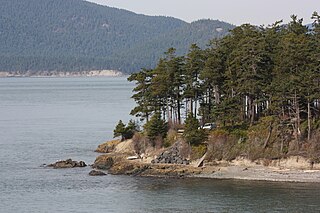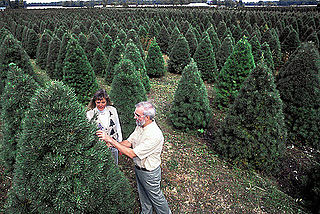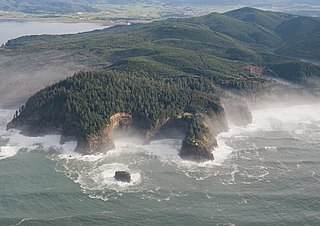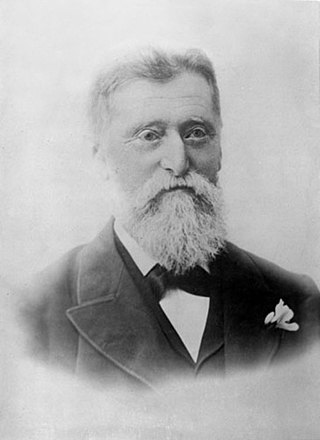
The Douglas fir is an evergreen conifer species in the pine family, Pinaceae. It is native to western North America and is also known as Douglas-fir, Douglas spruce, Oregon pine, and Columbian pine. There are three varieties: coast Douglas-fir, Rocky Mountain Douglas-fir and Mexican Douglas-fir.

Temperate rainforests are rainforests with coniferous or broadleaf forests that occur in the temperate zone and receive heavy rain.

Darfield is a town in the Selwyn District of the South Island of New Zealand. It is 35 kilometres west of Christchurch. Its population is 3,150 as of June 2023.

Abies concolor, the white fir, concolor fir, or Colorado fir, is a coniferous tree in the pine family Pinaceae. This tree is native to the mountains of western North America, including the Sierra Nevada and southern Rocky Mountains, and into the isolated mountain ranges of southern Arizona, New Mexico, and Northern Mexico. It naturally occurs at elevations between 900 and 3,400 metres.

The Eddy Arboretum is located at the Institute of Forest Genetics in the Sierra Nevada near Placerville, in El Dorado County, eastern California.

The Arboretum & Botanic Garden at the University of California, Santa Cruz, is located on the campus of the University of California, Santa Cruz, in the United States.

The Christchurch Botanic Gardens, located in the central city of Christchurch, New Zealand, were founded in 1863 when an English oak was planted to commemorate the solemnisation of the marriage of Prince Albert and Princess Alexandra of Denmark. The gardens sprawl over an area of 21 hectares and lie adjacent to the loop of the Avon River next to Hagley Park. The Christchurch Botanic Gardens have a variety of collections of exotic and local plants of New Zealand, several conservatories, a nursery, playground and Climatological Station.

Bottle Lake Forest is a production forest and recreational park located in Christchurch, New Zealand, approximately 10 kilometres (6.2 mi) north-east of the city centre. It makes up the vast majority of the area of the suburb Bottle Lake. The visitor centre at the Forest's entry from Waitikiri Drive provides visitors with information about the different roles of Bottle Lake Forest. It also provides fresh water access, toilet facilities and parking.

Pine and fir trees, grown purposely for use as Christmas trees, are vulnerable to a wide variety of pests, weeds and diseases. Many of the conifer species cultivated face infestations and death from such pests as the balsam woolly adelgid and other adelgids. Aphids are another common insect pest. Christmas trees are also vulnerable to fungal pathogens and their resultant illnesses such as root rot, and, in the U.S. state of California, sudden oak death. Douglas-fir trees in particular are vulnerable to infections from plant pathogens such as R. pseudotsugae.

Wilding conifers, also known as wilding pines, are invasive trees in the high country of New Zealand. Millions of dollars are spent on controlling their spread.

The flora of Scotland is an assemblage of native plant species including over 1,600 vascular plants, more than 1,500 lichens and nearly 1,000 bryophytes. The total number of vascular species is low by world standards but lichens and bryophytes are abundant and the latter form a population of global importance. Various populations of rare fern exist, although the impact of 19th-century collectors threatened the existence of several species. The flora is generally typical of the north-west European part of the Palearctic realm and prominent features of the Scottish flora include boreal Caledonian forest, heather moorland and coastal machair. In addition to the native species of vascular plants there are numerous non-native introductions, now believed to make up some 43% of the species in the country.

The Coast Range ecoregion is a Level III ecoregion designated by the Environmental Protection Agency (EPA) in the U.S. states of Washington, Oregon, and California. It stretches along the Pacific Coast from the tip of the Olympic Peninsula in the north to the San Francisco Bay in the south, including Grays Harbor, Willapa Bay, and the Long Beach Peninsula in Washington, the entire length of the Oregon Coast, and the Northern California Coast. Named for the Coast Range mountains, it encompasses the lower elevations of the Olympic Mountains, the Oregon Coast Range, the Californian North Coast Ranges, and surrounding lowlands.

Pseudocoremia suavis, the common forest looper, is a species of moth in the family Geometridae. It is regarded as being endemic to New Zealand. In 2007, however, the moth was found in west Cornwall, Great Britain, the first time it has been found outside of New Zealand.

The Central Pacific coastal forests is a temperate coniferous forest ecoregion located in the Canadian province of British Columbia and the U.S. states of Oregon and Washington, as defined by the World Wildlife Fund (WWF) categorization system.

The Volčji Potok Arboretum was opened to the public in 1952. It originally formed part of the Souvan family estate in 1885, which was taken over by the University of Ljubljana in 1952 and legally declared a place of cultural and natural heritage of national importance. Now independent of the university, it is the most visited botanical garden in Slovenia and in recent years has become well known for its spring flower shows. The arboretum is primarily a botanical garden for woody plants, the only one in Slovenia.

Thomas Kirk was an English-born botanist, teacher, public servant, writer and churchman who moved to New Zealand with his wife and four children in late 1862. The New Zealand government commissioned him in 1884 to compile a report on the indigenous forests of the country and appointed him as chief conservator of forests the following year. He published 130 papers in botany and plants including The Durability of New Zealand Timbers, The Forest Flora of New Zealand and Students' Flora of New Zealand.

The Queenstown Gardens, located next to the town of Queenstown, New Zealand, is a botanical garden which contains a variety of exotic and native trees and plants as well as a large pond and a range of facilities. The facilities in the garden include a children's playground, tennis, lawn bowls, skate boarding, BMX biking, skating, Parkrun, disc golf and ice skating/ice hockey. In winter for about four days it becomes the site of the LUMA Southern Lights Festival.

Cunninghamia lanceolata is a species of tree in the cypress family, Cupressaceae. It is native to south-central and southeast China. Ornamentally C. lanceolata is commonly planted as a specimen tree in temperate zones.

Puck's Glen is a river-formed ravine on the Cowal Peninsula, in Argyll and Bute, west of Scotland, with a popular scenic walking trail beside the Eas Mòr stream. In 2020 the glen and adjoining trails were closed temporarily due to COVID-19 restrictions, issues of stability of the gorge, and felling of trees infected by larch disease.

Orton Bradley Park is a forest park of some 650 hectares with its entrance close to the south shore of Lyttelton Harbour / Whakaraupō in New Zealand. It is managed as a not-for-profit private enterprise with a board of governors appointed by local communities and a chair appointed by the Government of New Zealand.




















